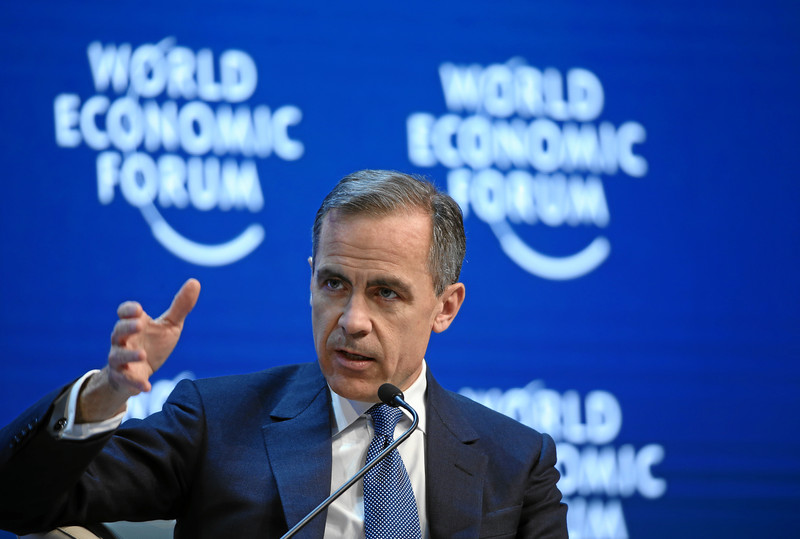Fraser Institute
Courts and governments caused B.C.’s property crisis—they’re not about to fix it

From the Fraser Institute
By Bruce Pardy
In British Columbia, property rights are in turmoil. The B.C. Supreme Court recently declared that Aboriginal title exists on 800 acres of land in Richmond, a suburb of Vancouver. Aboriginal title, said the court, is “senior and prior” to fee simple interests. In the shadow of the decision, given the implications, Aboriginal title claims are receiving more attention. Kamloops and Sun Peaks ski resort are targets in one such claim. Meanwhile, the B.C. government has been conferring Aboriginal title across the province too. It continues to make agreements, such as on Haida Gwaii, to transfer control over land use in the province.
Courts and governments have caused this problem. The framers of Canada’s new constitution, adopted in 1982, excluded rights to private property. But at the last hour, they guaranteed existing Aboriginal rights and title. Over decades, the Supreme Court of Canada has expanded the scope of those rights. The recent decision about Richmond is a culmination of its work. That decision is under appeal, first to the B.C. Court of Appeal. After that, we may find out if the Supreme Court approves. But that could take years.
It’s not just the courts. In 2015, the Trudeau government agreed to implement the United Nations Declaration on the Rights of Indigenous Peoples (UNDRIP). UNDRIP says that Aboriginal groups have the right to own, use, develop and control any lands that they traditionally occupied or used. In 2019, the B.C. legislature incorporated UNDRIP into BC law. Known as DRIPA, the statute requires B.C. law to be consistent with UNDRIP. The NDP government has been granting Aboriginal title and control across the province accordingly.
What can be done? The Canadian constitution has an onerous amending formula. Repealing the section on Aboriginal rights would be next to impossible. So would adding private property guarantees to the Charter. But last week, Dwight Newman, professor of law at the University of Saskatchewan, suggested an alternative in the Post. Rather than attempt wholesale change, he proposed an amendment specific to B.C.
Section 43 is one of the ways to amend the Canadian constitution. It allows changes “in relation to any provision that applies to one or more, but not all, provinces.” The requirements are simple. The legislature in one province and the federal Parliament must both pass a resolution declaring the amendment. That’s it. Such a resolution, Newman suggests, could guarantee that private property in B.C. has priority over Aboriginal title.
He might be right. Section 43 has been used, for example, to alter constitutional denominational school rights in Quebec and Newfoundland. In 1993, New Brunswick used Section 43 to add a provision to the Charter about linguistic rights in the province.
But Section 43 might be narrower than hoped. The New Brunswick amendment was not challenged in court at the time of its enactment. So, yes, Section 43 was used to change the Charter, but not with judicial benediction. Moreover, the Supreme Court has not considered the ways in which Section 43 can be used. Section 43 amendments so far have been minor, mere “tweaks” to the constitutional order. We do not know what meaning the Court might give to “any provision that applies to one province.” It could mean any new provision, but more likely it means any existing provision that applies only to the province. Which would rule out using Section 43 to protect property rights from Aboriginal title in B.C. If the Court allowed Section 43 to be used for that purpose, then Section 43 could theoretically be used for anything, including amending the Charter wholesale until each province had its own version.
Even if Section 43 could be used to fix the property mess, it requires both the province and Ottawa to act. In addition, B.C. legislation requires that such changes be first approved by referendum. The B.C. and federal governments have helped to cause the crisis and continue to do so. They seem intent on undermining the system of land tenure in their own society. They are not likely to disrupt the constitution to frustrate their own work.
Moreover, there are other, simpler places to begin. The federal government could reverse its support for UNDRIP. The B.C. legislature could repeal DRIPA. Neither sitting government will do that. Few political actors will step out of line on Aboriginal questions, even to defend the country’s land, economy, and people. Will we discover whether there is anything more Canadian, after all, than acquiescence? In Canada, truth and reconciliation has morphed into fiction and capitulation.
Canada’s property crisis runs deep, and not just in B.C. Aboriginal rights are widely regarded as the natural and proper order of things. Special status for Aboriginal people is deeply ingrained in Canadian culture as well as the constitution. But it is dead wrong. Legal rights should not depend on lineage or group affiliation. Everyone born in Canada is native to the place. In a free country, laws apply not to distinctive peoples, but to individual people and their private property.
Business
Sluggish homebuilding will have far-reaching effects on Canada’s economy

From the Fraser Institute
At a time when Canadians are grappling with epic housing supply and affordability challenges, the data show that homebuilding continues to come up short in some parts of the country including in several metro regions where most newcomers to Canada settle.
In both the Greater Toronto area and Metro Vancouver, housing starts have languished below levels needed to close the supply gaps that have opened up since 2019. In fact, the last 12-18 months have seen many planned development projects in Ontario and British Columbia delayed or cancelled outright amid a glut of new unsold condominium units and a sharp drop in population growth stemming from shifts in federal immigration policy.
At the same time, residential real estate sales have also been sluggish in some parts of the country. A fall-off in real estate transactions tends to have a lagged negative effect on construction investment—declining home sales today translate into fewer housing starts in the future.
While Prime Minister Carney’s Liberal government has pledged to double the pace of homebuilding, the on-the-ground reality points to stagnant or dwindling housing starts in many communities, particularly in Ontario and B.C. In July, the Canada Mortgage and Housing Corporation (CMHC) revised down its national forecast for housing starts over 2025/26, notwithstanding the intense political focus on boosting supply.
A slowdown in residential construction not only affects demand for services provided by homebuilders, it also has wider economic consequences owing to the size and reach of residential construction and the closely linked real estate sector. Overall, construction represents almost 8 per cent of Canada’s economy. If we exclude government-driven industries such as education, health care and social services, construction provides employment for more than one in 10 private-sector workers. Most of these jobs involve homebuilding, home renovation, and real estate sales and development.
As such, the economic consequences of declining housing starts are far-reaching and include reduced demand for goods and services produced by suppliers to the homebuilding industry, lower tax revenues for all levels of government, and slower economic growth. The weakness in residential investment has been a key factor pushing the Canadian economy close to recession in 2025.
Moreover, according to Statistics Canada, the value of GDP (in current dollars) directly attributable to housing reached $238 billion last year, up slightly from 2023 but less than in 2021 and 2022. Among the provinces, Ontario and B.C. have seen significant declines in residential construction GDP since 2022. This pattern is likely to persist into 2026.
Statistics Canada also estimates housing-related activity supported some 1.2 million jobs in 2024. This figure captures both the direct and indirect employment effects of residential construction and housing-related real estate activity. Approximately three-fifths of jobs tied to housing are “direct,” with the rest found in sectors—such as architecture, engineering, hardware and furniture stores, and lumber manufacturing—which supply the construction business or are otherwise affected by activity in the residential building and real estate industries.
Spending on homebuilding, home renovation and residential real estate transactions (added together) represents a substantial slice of Canada’s $3.3 trillion economy. This important sector sustains more than one million jobs, a figure that partly reflects the relatively labour-intensive nature of construction and some of the other industries related to homebuilding. Clearly, Canada’s economy will struggle to rebound from the doldrums of 2025 without a meaningful turnaround in homebuilding.
Business
Carney and other world leaders should recognize world’s dependence on fossil fuels

From the Fraser Institute
By Julio Mejía and Elmira Aliakbari
Simply put, despite trillions invested in the energy transition, the world is more dependent on fossil fuels today than when the United Nations launched its first COP. No wonder that ahead of COP30, leading voices of the net-zero-by-2050 agenda, including Bill Gates, are acknowledging both the vital role of fossil fuels on the planet and the failure of efforts to cut them.
On the heels of his first federal budget, which promises more spending to promote a “green economy,” Prime Minister Carney will soon fly to Brazil for COP30, the 30th United Nations climate summit. Like the former Trudeau government, the Carney government has pledged to achieve “net-zero” emissions in Canada—and compel other countries to pursue net-zero—by 2050. To achieve a net-zero world, it’s necessary to phase out fossil fuels—oil, natural gas, coal—or offset their CO2 emissions with technologies such as “carbon capture” or large-scale tree planting.
But after trillions of dollars spent in pursuit of that goal, it appears more unrealistic than ever. It’s time for world leaders, including Canada’s policymakers, to face reality and be honest about the costly commitments they make on behalf of their citizens.
For starters, carbon capture—the process of trapping and storing carbon dioxide so it’s unable to affect the atmosphere—is a developing technology not yet capable of large-scale deployment. And planting enough trees to offset global emissions would require vast amounts of land, take decades to absorb significant CO2 and risk unpredictable losses from wildfires and drought. Due to these constraints, in their net-zero quest governments and private investors have poured significant resources into “clean energy” such as wind and solar to replace fossil fuels.
According to the International Energy Agency (IEA), from 2015 to 2024, the world’s public and private investment in clean energy totalled and estimated US$14.6 trillion (inflation-adjusted). Yet from 1995 (the first COP year) to 2024, global fossil fuel consumption increased by more than 64 per cent. Specifically, oil consumption grew by 39 per cent, natural gas by 96 per cent and coal by 76 per cent. As of 2024, fossil fuels accounted for 80.6 per cent of global energy consumption, slightly lower than the 85.6 per cent in 1995.
The Canadian case shows an even greater mismatch between Ottawa’s COP commitments and its actual results. Despite billions spent by the federal government on the low-carbon economy (electric vehicle subsidies, tax credits to corporations, etc.), fossil fuel consumption in our country has increased by 23 per cent between 1995 and 2024. Over the same period, the share of fossil fuels in Canada’s total energy consumption climbed from 62.0 to 66.3 per cent.
Simply put, despite trillions invested in the energy transition, the world is more dependent on fossil fuels today than when the United Nations launched its first COP. No wonder that ahead of COP30, leading voices of the net-zero-by-2050 agenda, including Bill Gates, are acknowledging both the vital role of fossil fuels on the planet and the failure of efforts to cut them.
Why has this massive effort, which includes many countries and trillions of dollars, failed to transition humanity away from fossil fuels?
As renowned scholar Vaclav Smil explains, it can take centuries—not decades—for an energy source to become globally predominant. For thousands of years, humanity relied on wood, charcoal, dried dung and other traditional biomass fuels for heating and cooking, with coal only becoming a major energy source around 1900. It took oil 150 years after its introduction into energy markets to account for one-quarter of global fossil fuel consumption, a milestone reached only in the 1950s. And for natural gas, it took about 130 years after its commercial development to reach 25 per cent of global fossil fuel consumption at the end of the 20th century.
Yet, coal, oil and natural gas didn’t completely replace traditional biomass to meet the surging energy demand as the modern world developed. As of 2020, nearly three billion people in developing countries still relied on charcoal, straw and dried dung to supply their basic energy needs. In light of these facts, the most vocal proponents of the global energy transition seem, at the very least, out of touch.
The world’s continued reliance on fossil fuels should prompt world leaders at COP30 to exercise caution before pushing the same unrealistic commitments of the past. And Prime Minister Carney, in particular, should be careful not to keep leading Canadians into costly ventures that lead nowhere near their intended results.
-

 armed forces2 days ago
armed forces2 days agoCanadian veteran says she knows at least 20 service members who were offered euthanasia
-

 Frontier Centre for Public Policy1 day ago
Frontier Centre for Public Policy1 day agoRichmond Mayor Warns Property Owners That The Cowichan Case Puts Their Titles At Risk
-

 National2 days ago
National2 days agoConservative bill would increase penalties for attacks on places of worship in Canada
-

 Daily Caller2 days ago
Daily Caller2 days agoLaura Ingraham’s Viral Clash With Trump Prompts Her To Tell Real Reasons China Sends Students To US
-

 Business1 day ago
Business1 day agoSluggish homebuilding will have far-reaching effects on Canada’s economy
-

 Addictions2 days ago
Addictions2 days agoCanada is divided on the drug crisis—so are its doctors
-

 Alberta2 days ago
Alberta2 days agoHow economic corridors could shape a stronger Canadian future
-

 Business1 day ago
Business1 day agoMark Carney Seeks to Replace Fiscal Watchdog with Loyal Lapdog













